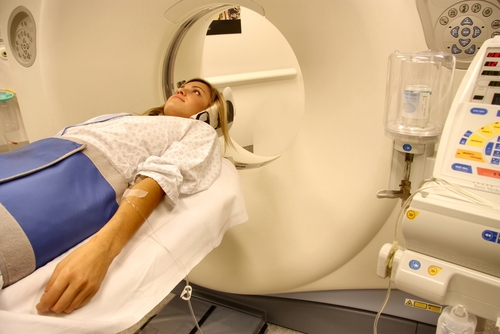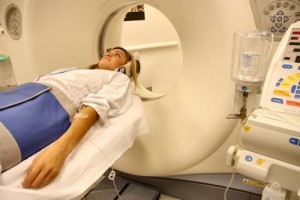Low-Dose Radiation Leads To Drop In PAR For Idiopathic Pulmonary Arterial Hypertension Patient, According To Study

 A novel concept of targeting the autonomic nervous system around pulmonary arteries and activation of vasointestinal peptides (VIP) to treat Idiopathic Pulmonary Arterial Hypertension (IPAH) was recently developed by a group of researchers.
A novel concept of targeting the autonomic nervous system around pulmonary arteries and activation of vasointestinal peptides (VIP) to treat Idiopathic Pulmonary Arterial Hypertension (IPAH) was recently developed by a group of researchers.
The study, published in the online journal Therapeutics and Clinical Risk Management (March 27, 2014), profiled a 58 year-old woman who had complained about dyspnea and edema in the lower extremities. Repeated rounds of pulmonary and cardiac X-rays, MRI scans, tomography scans, endobronchial and endoesophagal ultrasounds, thrombosis and enlarged lymph nodes around the pulmonary arteries were noted. Doctors’ primary concern, however, was a mass located in the upper left mediastinum of the lungs.
[adrotate group=”4″]
Chances of possible malignancy were ruled out after biopsies and histological examinations of the aforementioned mass. Repeated rounds of homographic and MRI scans, cell cultures, PCR, and other relevant examinations ruled out possibilities of lymphomas, pulmonary embolism, and tuberculosis. Finally, researchers deduced that the woman was suffering from IPAH with acute mediastinal fibrosis.
The only specific course of treatment administered throughout the diagnostic examinations was a continuous string of low-strength radiation (strength 4Gy.) over a period of seven months, with supportive therapy in the form of bosentan (125 mg twice daily). This therapy regimen was interrupted periodically to check for progress in controlling the patient’s Pulmonary Arterial Resistance (PAR). To the doctors’ surprise, there was a drop of more than two-thirds of the patient’s PAR (from 1360 units to 400 units) over the span of seven months, with no major difference observed with the interruption in bosentan therapy. In addition, no complications or health issues were reported by the patient.
This unexpected result could be attributed to two hypotheses. First, the low dose radiation caused inhibition of the sympathetic arm of the autonomic nervous system located around the pulmonary arteries, resulting in reduction of pulmonary vascular resistance and increased dilation of blood vessels. Another possibility was the activation of Vasointestinal Peptides (VIP). Earlier studies have shown the role of VIPs in hemodynamics in animals and in-vitro mammalian cells. It has been suggested that on activation by low dose radiation,in some tissues, these VIPs must have relaxed pulmonary arteries and reduced vasoconstriction. It is important to note that VIP containing nerves are present in abundance in the walls of the pulmonary arteries and have been found to be nearly absent in patients with Idiopathic Pulmonary Arterial Hypertension. The VIP concentrations in this study were not measured.
[adrotate group=”3″]
The study was conducted with the help of an ablation device, where the endoluminal thermal energy must have caused damage to the autonomic abluminal nerves in the surrounding tissues. Hence, the possible outcome.
The team of researchers in this study included lead authors Wolfgang Hohenforst-Schmidt (from Medical Clinic, Coburg Clinic, University of Würzburg, Coburg, Germany) and Paul Zarogoulidis ( from Pulmonary Department-Oncology Unit, G Papanikolaou General Hospital, Aristotle University of Thessaloniki, Thessaloniki, Greece) and a host of researchers from Greece, Germany, USA, and China. Generous cooperation from consultants at the National Pulmonary Hypertension Center of Excellence in Giessen made the study possible.
Though this was an exceptional study, never reported in humans before, researchers note that all the conclusions drawn in this regard are based on hypotheses — they are mere possibilities and not established facts. While the study offers hope for a possible, new treatment approach for Idiopathic Pulmonary Arterial Hypertension, further research and more case studies would help in strengthening the foundation laid by this particular case.







